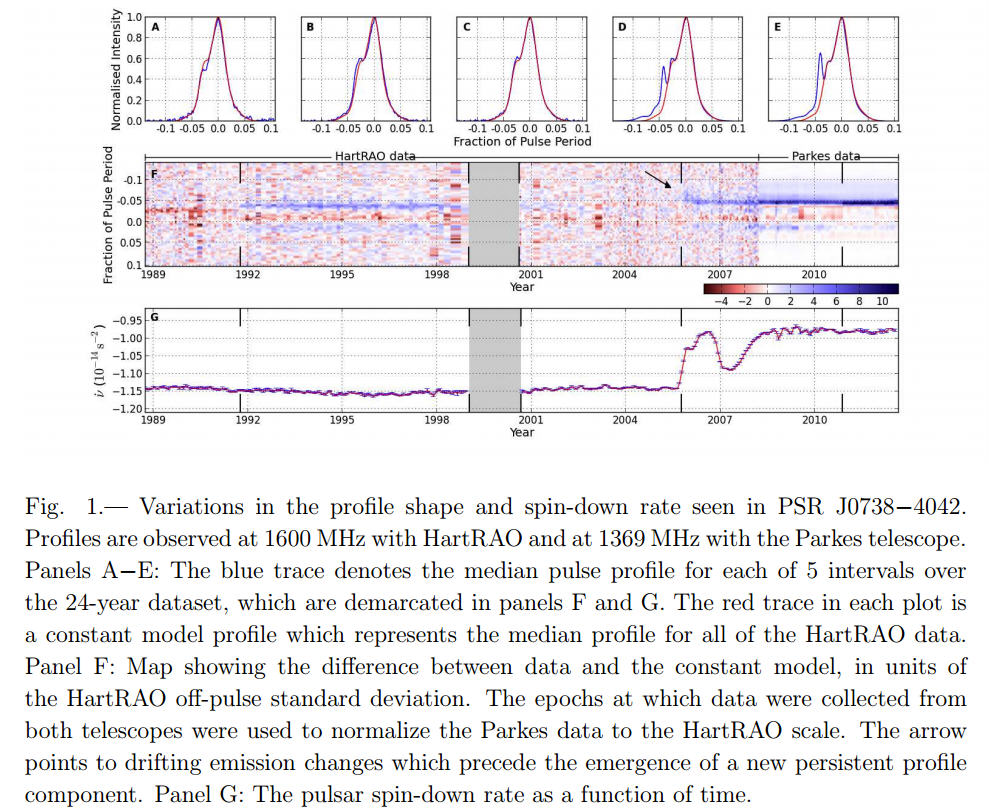Calling Bill Haley and the Comets, because PSR J0738-4042, which lies 37,000 light-years from Earth in the constellation of Puppis, is being rocked around the clock.
As in being constantly hit by asteroids.
It's not a great place. The environment around this star is especially harsh, full of radiation and violent winds of particles, say the researchers who used telescopes in South Africa and Australia to find the assaults.
"One of these rocks seems to have had a mass of about a billion tonnes," saidAustralian Commonwealth Scientific and Industrial Research Organisation's (CSIRO) astronomer and member of the research team Dr. Ryan Shannon. "If a large rocky object can form here, planets could form around any star. That's exciting."
PSR J0738-4042
is a pulsar - it emits a beam of radio waves. As the star spins, its radio beam flashes over Earth again and again with the regularity of a clock.

Click image for full size. Credit: arXiv:1311.3541
In 2008, Shannon and a colleague predicted how an infalling asteroid would affect a pulsar. It would, they said, alter the slowing of the pulsar's spin rate and the shape of the radio pulse that we see on Earth.
"That is exactly what we see in this case," Dr Shannon said.
"We think the pulsar's radio beam zaps the asteroid, vaporising it. But the vaporised particles are electrically charged and they slightly alter the process that creates the pulsar's beam."
Asteroids around a pulsar could be created by the exploding star that formed the pulsar itself, the scientists say.
The material blasted out from the explosion could fall back towards the forming pulsar, forming a disk of debris.
Astronomers have found a dust disk around another pulsar called J0146+61.
"This sort of dust disk could provide the 'seeds' that grow into larger asteroids," said PhD student Paul Brook, who led the study of PSR J0738-4042.
In 1992 two planet-sized objects were found around a pulsar called PSR 1257+12. But these were probably formed by a different mechanism, the astronomers say.


